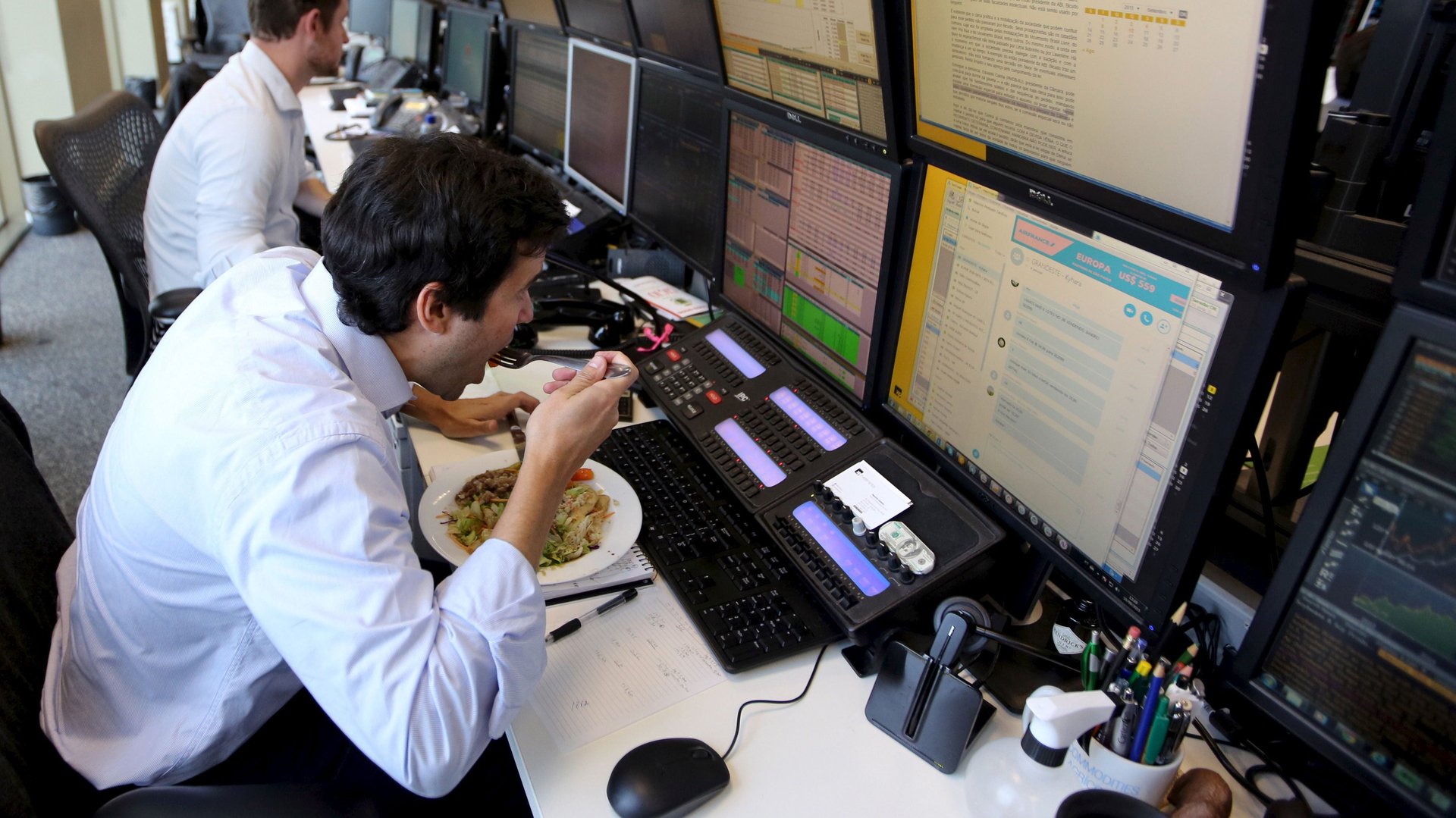Why is it still called a lunch break?
It’s 1pm. Time to get up from your desk, find a comfortable place to sit, and spend 60 minutes reading a book and savouring a homemade sandwich. No? Ok, time to walk across the street to your favorite brasserie for a salad and a glass of wine; nip home for some soup; meet a friend for noodles?


It’s 1pm. Time to get up from your desk, find a comfortable place to sit, and spend 60 minutes reading a book and savouring a homemade sandwich. No? Ok, time to walk across the street to your favorite brasserie for a salad and a glass of wine; nip home for some soup; meet a friend for noodles?
Probably not. According to data from the UK released today, people are using the “lunch” “hour” for activities other than lunch, and are very unlikely to spend an hour doing it. The UK is particular, but plenty of developed economies show similar patterns in which non-lunch activities colonize the intra-day break.
Glassdoor, a jobs site that allows employees to anonymously rate employers, surveyed 2,000 adults in the UK to find out what they did with their lunch hour. (Perhaps oddly, they didn’t include the response of simply “eat lunch” as an option, which is a limitation.) The vast majority, 82%, said they took less than an hour for lunch, with over 12% saying they didn’t take a break at all. The average break lasted 31 minutes. More than a quarter said they had lunch with colleagues, but the most popular response was that people used it as a chance to escape both workspace and co-workers. Lots used the internet; many ate while doing so.
The UK government mandates that workers be given 20 minutes rest for every 6 hours worked, though whether that’s paid or not depends on the contract. Many contracts still stipulate core hours and breaks, for example 9am to 6pm with an hour for lunch. But when asked whether they’d prefer a different structure, almost 40% of workers wanted more flexibility rather than a set break.
There are two ways to read the data. The first is depressing: Working adults are too busy or too stressed to take hour-long breaks, or don’t feel able to devote time to enjoyable activities. Some spend time gaming, exercising, or shopping, but more seem to just get up for a quick breather, or switch focus but remain at their screens.
Another reading is perhaps more hopeful: Employees are using the concept of a lunch break to introduce flexibility into their day, because they find that more valuable than a longer mealtime. Flexibility is arguably becoming more normal, as the millennial generation and those coming up after it react against the “workaholic” cultures they’re entering and ask for more family-friendly terms, and automation may increasingly free up humans from some desk-based work.
Meanwhile, technology-enabled remote working is beginning to change the metric of “hard work” away from time spent in the office, and toward tasks achieved. The Wellcome Trust, a UK research organization, recently said it is considering trialing a four-day work week while keeping pay unchanged, basing its experiment on Perpetual Guardian, a New Zealand firm which brought in a shorter week in November 2018 after a successful trial.
The combination of all these factors could see the traditional lunch break become a thing of the past—a hangover from a time when people still lived close enough to their jobs to pop home for cheese on toast at the set hour. In an ideal world, we’d use time better to commute at non-busy hours, to work remotely when possible, to exercise when our bodies crave it, and to see our kids when they’re awake.
That might mean dispensing with the idea of an (increasingly illusory) hour-long lunch break—not because we don’t need breaks, but because we don’t need our employer to tell us when or what they should be.
Correction: An earlier version of this article said that the Wellcome Trust planned to trial a four-day week. In fact it is considering a trial.